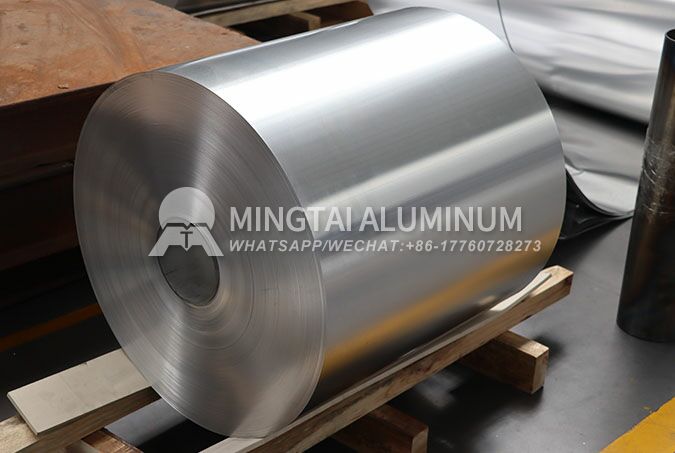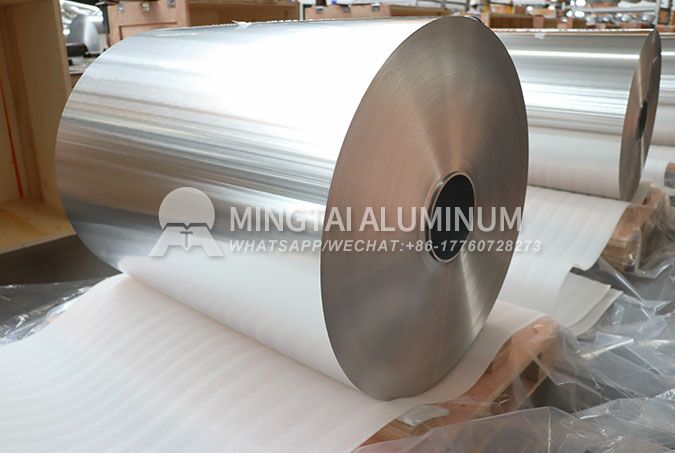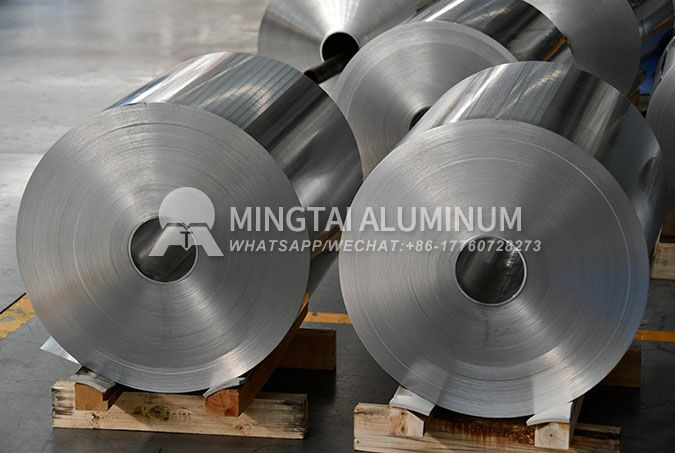3004 Aluminum Foil for Lunch Boxes: Higher Stamping & Drawing Performance Than 3003
Aluminum foil lunch boxes are widely used in food packaging due to their lightweight, heat resistance, and recyclability. The stamping and drawing performance of aluminum foil directly determines the production efficiency and product quality of lunch boxes—especially for deep or complex-shaped lunch boxes. Among common aluminum alloys, 3004 aluminum foil for lunch boxes outperforms 3003 aluminum foil in stamping and drawing performance, becoming the preferred material for high-demand lunch box manufacturing. Henan Mingtai Aluminum Co, Ltd. (stock code: 601677), a leading aluminum processor with over 20 years of experience, produces high-quality 3004 aluminum foil for lunch boxes, providing reliable support for the food packaging industry.
1. Alloy Composition Difference: The Core Reason for 3004 Aluminum Foil’s Superior Stamping & Drawing Performance

The stamping and drawing performance of aluminum foil is fundamentally determined by its alloy composition. Both 3003 and 3004 are 3-series aluminum-manganese alloys, but their ingredient ratios create distinct performance gaps:
●3003 Aluminum Foil: Mainly composed of aluminum (≥97%) and manganese (1.0-1.5%), with no magnesium added. Manganese improves basic strength and corrosion resistance but provides limited support for stamping and drawing—its single alloying element makes it difficult to withstand high tensile forces during deep drawing.
●3004 Aluminum Foil for Lunch Boxes: Based on 3003, it adds 0.8-1.3% magnesium to form an Al-Mn-Mg ternary alloy system. Magnesium atoms form fine precipitates in the aluminum matrix, which not only enhance strength but also significantly improve the alloy’s plastic deformation ability. This allows 3004 aluminum foil to maintain structural integrity during stamping and drawing, avoiding cracks or thinning. Mingtai Aluminum strictly controls the magnesium content of 3004 aluminum foil (tolerance ±0.05%) to ensure stable stamping and drawing performance.
2. Mechanical Properties Comparison: 3004 Aluminum Foil Excels in Strength & Ductility for Lunch Box Stamping
Mechanical properties are the direct manifestation of stamping and drawing performance. For aluminum foil lunch boxes, tensile strength, yield strength, and elongation are key indicators—3004 aluminum foil shows obvious advantages over 3003:
|
Alloy |
Temper |
Tensile Strength (MPa) |
Yield Strength (MPa) |
Elongation (%) |
|
3003 Aluminum Foil |
O |
110-140 |
40-60 |
20-25 |
|
3004 Aluminum Foil (Lunch Box) |
O |
180-220 |
70-90 |
18-22 |
●Higher Tensile Strength: 3004 aluminum foil’s tensile strength is 50-60% higher than 3003. During lunch box stamping, it can withstand greater pulling forces without breaking, making it suitable for deep-drawn lunch boxes (depth ≥50mm) that 3003 cannot handle.
●Balanced Yield Strength & Elongation: Although 3004’s elongation is slightly lower than 3003, its higher yield strength prevents excessive deformation or wrinkling during stamping. This balance ensures that lunch boxes maintain a smooth surface and precise shape—critical for leak-proof and aesthetic requirements. Mingtai’s 3004 aluminum foil undergoes strict mechanical testing, with each batch’s performance deviation ≤5%.

3. Practical Application Advantages: 3004 Aluminum Foil Solves Lunch Box Manufacturing Pain Points
In actual lunch box production, 3004 aluminum foil’s superior stamping and drawing performance addresses many challenges faced by 3003 aluminum foil:
●Deep Drawing Adaptability: For lunch boxes with compartments or deep cavities (e.g., bento boxes), 3003 aluminum foil often cracks at the bottom or edges during stamping. 3004 aluminum foil’s strong plastic deformation ability allows it to complete deep drawing in one pass, reducing production steps and scrap rates by 15-20%.
●Edge Strength & Fold Resistance: Lunch box edges need to be folded or sealed. 3003 aluminum foil’s low strength easily causes edge cracking during folding, while 3004 aluminum foil’s higher strength ensures fold integrity—even after repeated bending, it does not break, improving the lunch box’s leak-proof performance.
●Thickness Reduction Potential: Due to its higher strength, 3004 aluminum foil can be used in thinner gauges (0.08-0.12mm) compared to 3003 (0.10-0.15mm) for the same lunch box strength. This reduces material consumption by 10-15%, lowering production costs while maintaining product quality.
4. Mingtai Aluminum’s 3004 Aluminum Foil for Lunch Boxes: Ensuring Stable Stamping & Drawing Performance
Mingtai Aluminum, headquartered in Advanced Manufacturing Industry Development Zone, Gongyi City, Henan Province, has 6000+ employees and 600+ professional and technical personnel. It is equipped with advanced production lines such as CVC 6-roller cold rolling mills, annealing furnaces, and tension bending straightening cleaning machines, ensuring the high quality of 3004 aluminum foil for lunch boxes:
●Precision Rolling Control: The CVC 6-roller cold rolling mill ensures uniform thickness of 3004 aluminum foil (tolerance ±0.005mm), avoiding uneven stress during stamping that causes deformation.
●Optimized Annealing Process: Computer-controlled annealing furnaces adjust heating and cooling rates to control the grain size of 3004 aluminum foil (50-80μm), maximizing its stamping and drawing performance.
●Eco-Friendly Production: Mingtai uses recycled aluminum (with harmless aluminum slag treatment) in 3004 aluminum foil production, reducing carbon emissions by 18%—aligning with the food packaging industry’s green development goals.

Contact Mingtai for 3004 Aluminum Foil for Lunch Boxes
If you need aluminum foil with excellent stamping and drawing performance for lunch box manufacturing, Mingtai’s 3004 aluminum foil is your ideal choice.
Email: sales@mingtai-al.com
Whatsapp/Wechat: +86-17760728273
Website: www.mingtaialuminum.com







